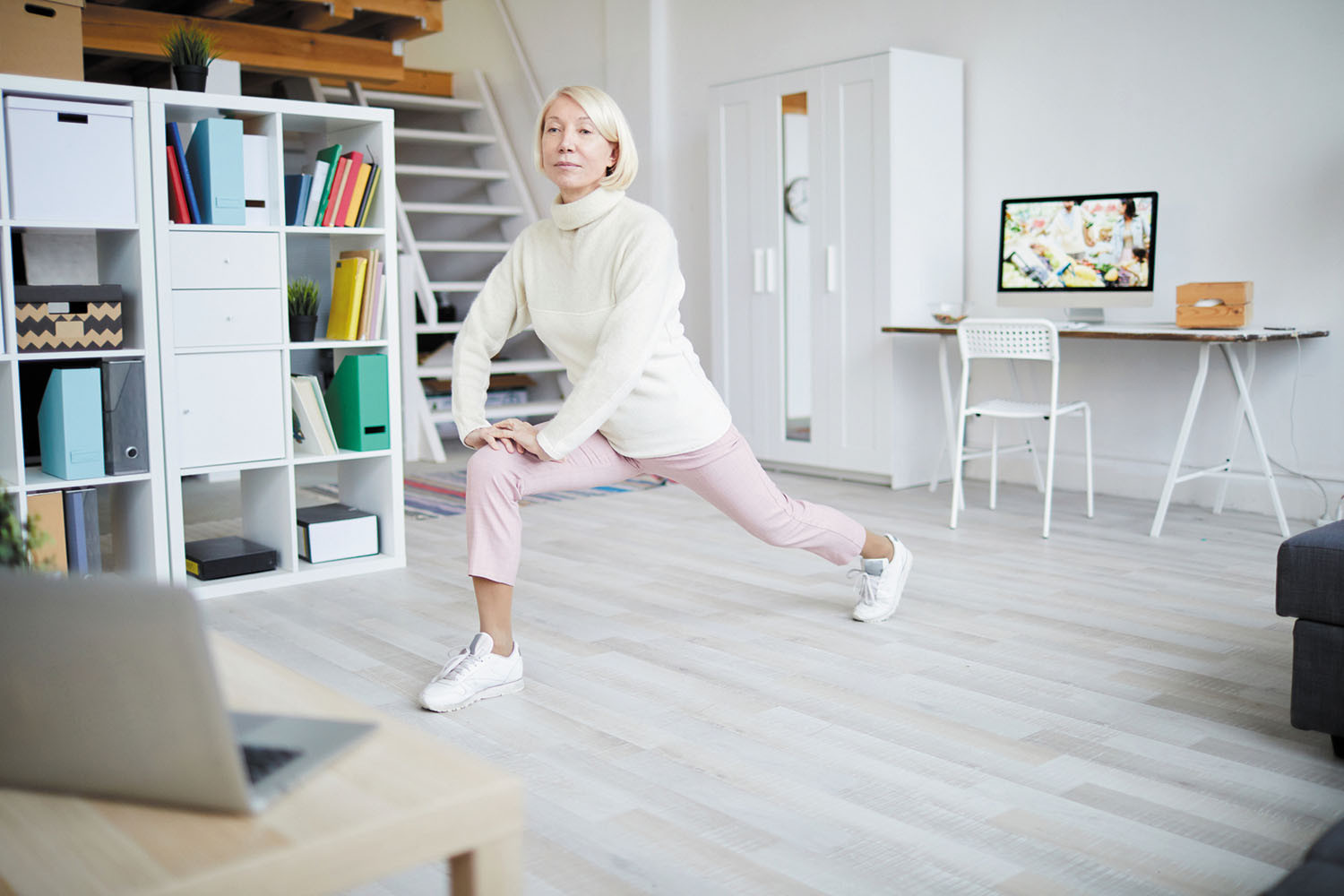
5 timeless habits for better health

What are the symptoms of prostate cancer?

Is your breakfast cereal healthy?

When pain signals an emergency: Symptoms you should never ignore

Does exercise give you energy?

Acupuncture for pain relief: How it works and what to expect

How to avoid jet lag: Tips for staying alert when you travel

Biofeedback therapy: How it works and how it can help relieve pain

Best vitamins and minerals for energy

Should you take probiotics with antibiotics?
Exercise & Fitness Archive
Articles
Don't take back pain sitting down
Pain when sitting can be caused by a number of common problems, including problems with the discs that cushion the vertebrae in the back. Lying down can help the pain temporarily, but the goal should be to get up and move as soon as possible. People should see a doctor if your pain is extremely severe, if it comes back after getting better, or if it occurred after an injury.
Why you should move — even just a little — throughout the day
People who sit for long, uninterrupted periods of time may increase their risk of cardiovascular disease, even if they get the recommended 30 minutes of daily exercise. Sedentary behavior appears to make people more prone to developing insulin resistance and inflammation, which are key players in the buildup of fatty plaque inside arteries. Experts say people should add short bursts of movement to their daily routine to break up long periods of sitting.
Step up your walking game
Most people typically get around 3,000 to 4,000 steps per day doing things such as household chores, going to the mailbox, or grocery shopping. But people who walk 8,000 steps per day (about 4 miles in total) may live longer than those who walk just 4,000 steps per day—and walking speed doesn't seem to matter. People who walk 12,000 steps per day may live even longer than those who take 8,000 steps. But the added benefit was small, and walking even more may not make a difference.
Orienteering: Great exercise and better thinking skills?
The navigation sport orienteering combines map and compass reading with exercise. It's a fun way to get outside and get some exercise — and it may even help fight cognitive decline.
Move of the month: Stationary lunge
Lunges, which strengthen the entire lower body, are a good example of a functional exercise. These exercises mimic everyday actions (such as picking something up off the floor), thereby improving physical functioning throughout the day.
Try this: Take a step back
Performing reverse lunges helps develop key hip muscles for better stability and teaches how to better control backward movement and coordination.
Exercise may improve atrial fibrillation
A 2023 study found that for people with atrial fibrillation, a program of supervised and home-based exercise may reduce the severity and frequency of their symptoms.
Exercises to try in the pool right now
Exercising in a pool provides an effective workout that is easy on the joints. Exercises can be made easier if they're done in slightly deeper water, where there's more buoyancy and support. They can be made harder by moving faster and holding fingers together like paddles. When starting a water workout, experts advise taking it easy at first. People should start with easier exercises and shorter durations, or do less than they feel up to. If they're not sore the next day, they'll know they did the right amount of exercise. From there, they can gradually increase the intensity.
Power up your walking routine
Walking has long been the most popular form of aerobic exercise among American adults. Though it offers cardiovascular benefits, walking can fall short because it doesn't incorporate other body areas besides the legs. People can power up their walking regimen by using walking poles, alternating walking with high-intensity intervals or resistance exercises, or strapping on a weighted backpack. Listening to music, podcasts, or books on tape can make exercise seem easier.
Mud runs: Dirty, challenging, next-level fun
Mud runs are outdoor team events that take the form of an obstacle-course competition and promise plenty of good, clean (dirt-covered) fun for participants. Competing in a mud race is physically challenging, but can deliver many health benefits for those who train for them.

5 timeless habits for better health

What are the symptoms of prostate cancer?

Is your breakfast cereal healthy?

When pain signals an emergency: Symptoms you should never ignore

Does exercise give you energy?

Acupuncture for pain relief: How it works and what to expect

How to avoid jet lag: Tips for staying alert when you travel

Biofeedback therapy: How it works and how it can help relieve pain

Best vitamins and minerals for energy

Should you take probiotics with antibiotics?
Free Healthbeat Signup
Get the latest in health news delivered to your inbox!
Sign Up











